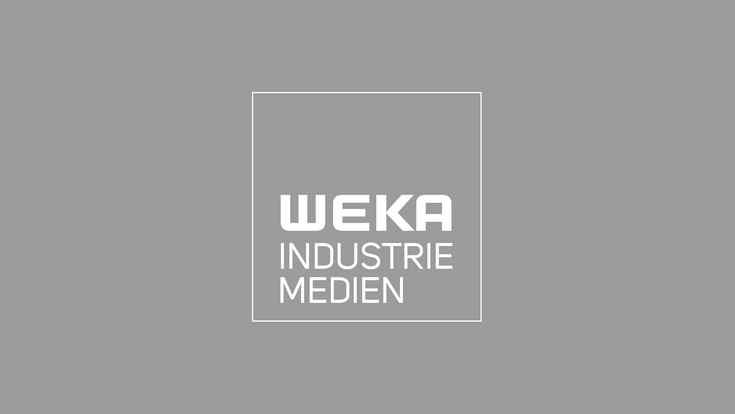ACT Environmental started as small part time operation in Sunnyvale, California back in 2000, but has grown rapidly. The company now has offices across the state and handles a combination of medical, hazardous and radioactive wastes on behalf of its clients.
With some of the toughest environmental laws in the world, operating a hazardous waste disposal business in California means always being ready to innovate. While disposal options for medical waste in the state are strictly controlled, there is also now a requirement to recycle that waste.
“Our client came to us with a need to recycle their medical waste,” explains Jeff Ruhl, ACT’s San Deigo branch manager and lead of the Microwave Disinfection Unit. “They challenged us and said ‘we need to recycle everything’, so we went through a process to determine which kind of treatment process would give us the best feedstock for waste to energy and recycling options.”
That initial investigation led the firm to make a significant investment in developing a microwave disinfection plant. The result is a facility which is permitted by the California Department of Public Health (CDPH) as an ‘Approved Alternate Technology’ for regulated medical waste.
“We settled on this technology because it shreds the waste first and treats it with a very uniform consistency going through the unit,” Ruhl tells WMW. “Our clients really like the ability of this unit to shred the waste, compared to autoclave which just melts the waste down and it stays in tact.”
The process
Regulated medical waste arriving at the facility is first weighed and scanned for radioactive material. It is then logged into the system. The microwave unit itself is around the size of a shipping container with a 1 cubic yard (0.76 cubic metre) bin which lifts the waste into the top of the machine.
“The waste is dumped into a hopper which has a paddle that pushes the waste down into the shredder,” explains Ruhl. “The shredder is located directly under the hopper. Once the goes through the shredder it falls into a giant tube which angles up.”
In that tube is an augur which conveys the waste through the process.
“What’s nice is that unlike an autoclave we’re not just treating in batches. It’s a consistent thing - like a conveyer belt but with an augur. As the waste fills up in the bottom of the screws sensors detect the temperature in the unit and how much waste is in there. Once there is enough it starts to turn very slowly.”
As the waste progresses through the process it is subjected to microwaves at various points along the journey.
“All of the waste passes beneath six microwaves. If all the time and temperature parameters are met the waste will progress down into a secondary augur which carries the treated waste into a compactor. Once it’s hot and everything is running it tells you when it needs more waste and you can just keep feeding it and it keeps kicking out treated waste. Right now we can process around 1000 lbs (453kg) per hour.”
The entire process takes around 35 minutes from start to finish. In order to comply with California’s strict regulations the waste is laced with bacteria spore samples after the shredding process. ACT tracks the time and temperature of the samples and then incubates them at the end of the process to compare against a control sample and determine if the sterilisation process has been successful.
While the state dictates a rigorous testing procedure, ACT implements an even more stringent regime of its own with testing taking place every four hours.
End Product
The need to be able to dispose of the end product at waste to energy plants was the driving factor behind the company’s decision to invest in the plant.
The majority of the end product is largely plastic, but there is also a significant proportion of paper. Ruhl says that following the shredding process the output is slightly larger than confetti and an ideal fuel for waste to energy plants. However, it can only be used as a fuel at such plants, which are not themselves licensed to process regulated medical waste, because of the certified microwave disinfection process through which it has passed.
“It’s something that a lot of our larger clients were really excited about,” says Jeff Picket, marketing specialist at ACT. “It drove the entire process of acquiring, and permitting and bringing the whole plant online. We have multiple facilities which we can take this to and basically it’s the perfect feedstock.”
Ruhl adds that over the 16 years the company has been in business, the trend towards diverting the waste it handles from away landfill and into waste to energy plants has grown. “Our clients are sending more and more to waste to energy,” he says.
The Business Case
Today’s healthcare and life sciences providers face more waste disposal challenges than ever, but according to Picket microwave disinfection technology isn’t being widely used right now because of the capital commitment. However, located in San Diego the facility is well positioned to process waste from the significant local bio-tech industry, but also accepts waste from across the state.
“We wanted to make this a major initiative to fill a niche which we felt was important, while treating the environment in the best way possible,” Picket says. “We’re always trying to provide the best solutions for our customers and as we get feedback, both anecdotally and systematically, we look at efficiencies we can provide and competitive advantages we can offer to differentiate ourselves.”
“With this particular microwave disinfection approach it’s something where specific clients had come to us wanting something they couldn’t get anywhere,” he adds. “I think you can infer from the fact that we’re already looking at other plants that we’re projecting a good return.”
But for Picket the decision to develop such projects is not all about return on investment and the bottom line.
“There’s a halo effect ,” he says. “It speaks to our values as a company in terms of how we want to treat the environment, and also for our customers about what they want to provide in terms of sustainability reports and ways in which they can point to doing their best to preserve the plant.”
Bright Future
In the future ACT hopes to be able to further improve the facility’s environmental credentials by powering it using solar panels to power the entire process. The company has already done some preliminary investigations which have come back with some encouraging findings on the feasibility of such a switch.
Due to the nature of the medical industry it is inevitable that it will continue to use large volumes of disposable items. Driven by California’s progressive approach to resource management, ACT has found a way to bring down the environmental impact of that waste.
According to Ruhl, so far the plant has performed impeccably. If that initial success continues it seems likely more plants will follow. And don’t be surprised, if as is often the case on environmental issues, where California leads, others soon follow.


